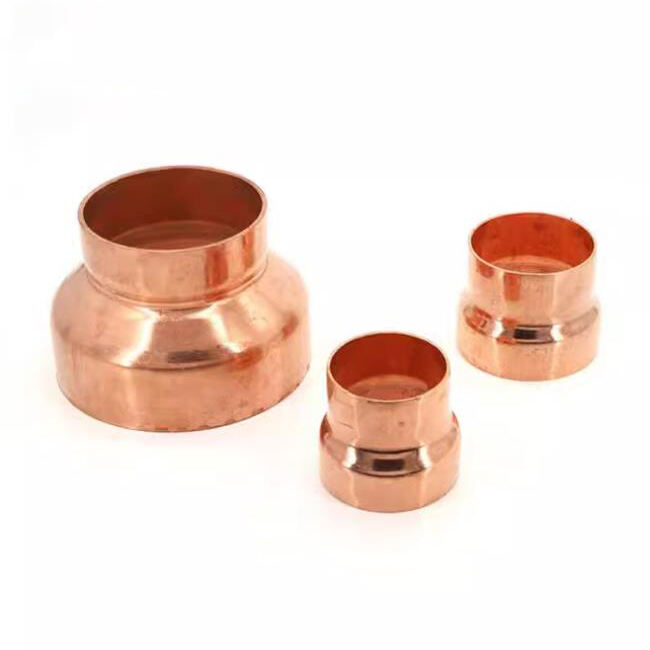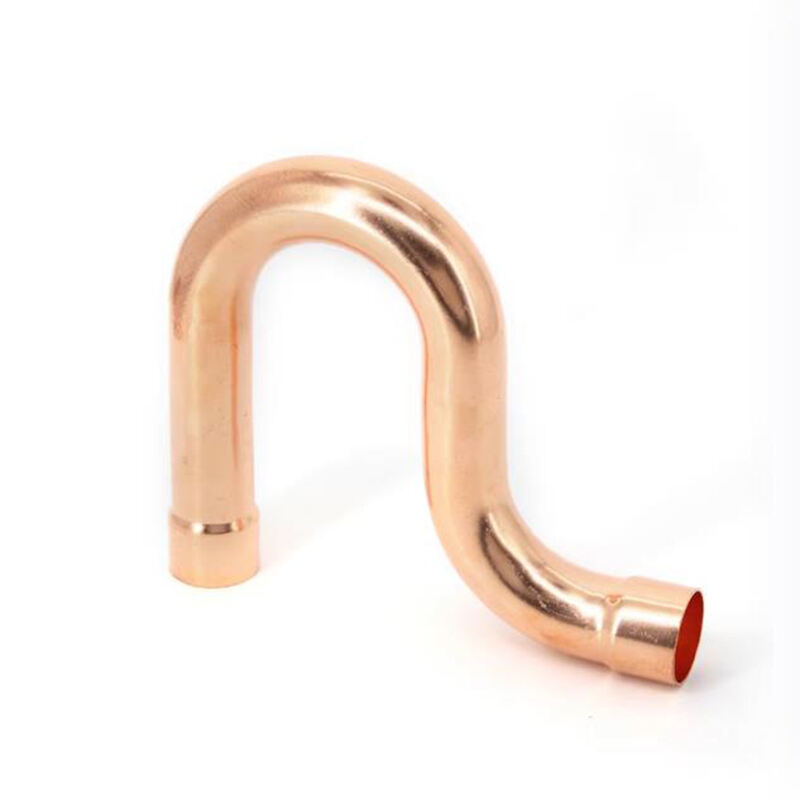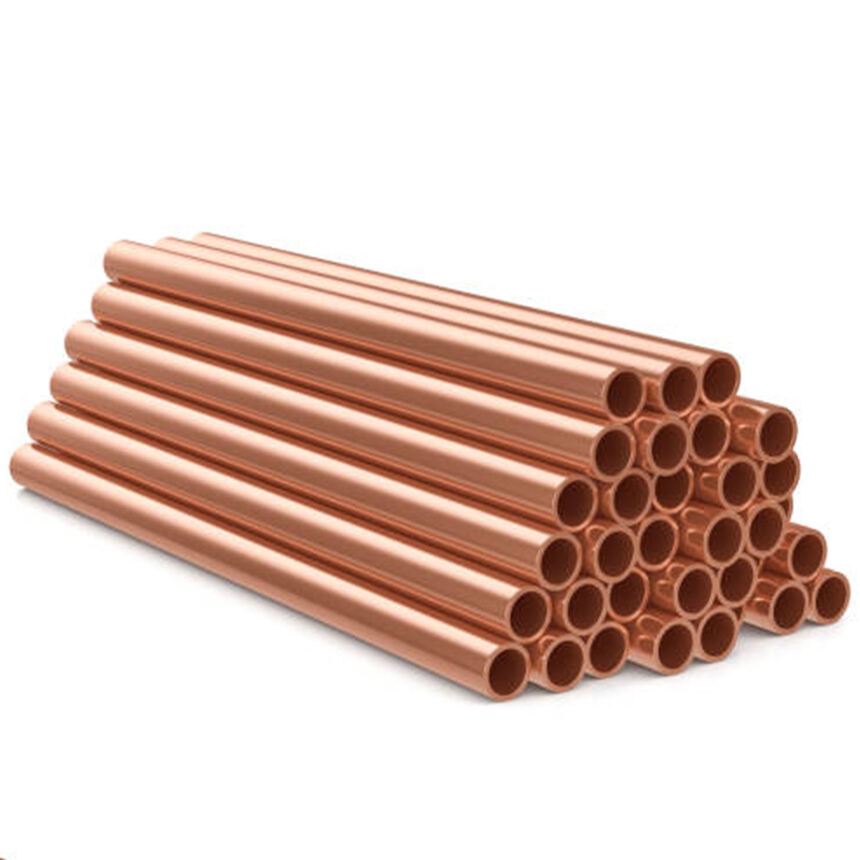Why Copper Fittings Dominate Modern Plumbing Systems
Durability and Corrosion Resistance
Copper fittings stand out because they last so long and don't corrode easily, which makes them great for building reliable plumbing systems. The way copper develops a natural protective layer helps it withstand all sorts of weather and environmental factors without rusting away. Real world tests show these fittings can stick around for over half a century in most situations, beating out plenty of other materials used in plumbing today. Plus there's another benefit nobody talks about much but is super important: copper naturally resists bacteria growth inside pipes. This means fewer problems with dirty water and better overall safety when running water through homes and buildings. That's why so many plumbers still reach for copper despite newer alternatives on the market.
Thermal Conductivity for Efficient Systems
Copper stands out because of how well it conducts heat, allowing systems to dissipate warmth efficiently something really important when talking about plumbing, especially in heating situations. Because copper moves heat so effectively, this means less energy gets used overall, and the whole system works better too, saving money on bills down the road. Studies have shown that copper piping actually transfers heat better than both plastic and brass options available today. For anyone looking to build or upgrade their plumbing, copper remains a top choice despite newer materials entering the market, simply because it just works so reliably for what needs to be done.
Malleability in Complex Installations
The fact that copper bends so well gives it a real edge in today's plumbing setups. Plumbers can shape it to match all sorts of complicated layouts without much trouble. Because it adapts so readily, there's no need for so many connectors and joints which often become problem spots for leaks. Most plumbers will tell anyone who asks that copper works best when installing something custom made, particularly in places where other materials just won't bend the way they need to. Take the hospital building in Delaware with those curved walls for instance. The copper piping had to follow those curves exactly, and regular pipes would have broken or cracked trying. That project alone shows why copper remains popular despite newer alternatives on the market.
Copper vs. Brass Fittings: Material Comparison
Longevity in High-Pressure Environments
Copper fittings hold up really well under pressure situations where things get intense, which makes them better than brass fittings for important plumbing jobs around the house or building. The numbers from the field show time and again that copper fittings break down less frequently than brass ones when pushed to their limits. Brass does last pretty long, but there's a problem with it cracking under stress when used heavily over time. That's why plumbers tend to reach for copper whenever they need something that will stand up to tough conditions without letting go unexpectedly.
Cost-Effectiveness Over Time
Copper fittings might cost more upfront than brass options, but they actually save money over time because they need so much less maintenance and replacement work. When looking at the big picture, copper just doesn't wear out as fast, meaning fewer parts end up in landfills and companies spend less cash in the long run. Industry professionals have pointed out time and again that going with copper means lower total costs across the entire life of a plumbing system. For business owners watching their bottom line, this makes copper fittings a smart investment despite the higher sticker price.
Compatibility with Water Quality Standards
Copper fittings have built a solid reputation when it comes to keeping water clean because they don't release any substances into the water supply. No nasty chemicals end up in drinking water thanks to this property. Major health groups keep pushing copper as one of the safest materials for pipes, something that matches up well with strict water quality rules everywhere. Brass fittings tell a different story though. They tend to include some lead content, which creates problems meeting regulations and raises real worries about what might be getting into our taps. When safety matters most, copper stands out as the better option overall, since it meets all current safety requirements without question.
Installation Techniques for Copper Pipe Connectors
Soldering Best Practices
Getting the soldering technique right makes all the difference when it comes to creating solid, watertight joints in copper plumbing. The key starts with cleaning those fittings properly and selecting the correct flux for the job. Most plumbers will tell anyone who'll listen that following standard procedures cuts down on problems after installation. Good soldering doesn't just make pipes last longer; it keeps water flowing smoothly through the system without interruptions. And let's not forget about material quality either. Cheap solder or poorly aligned components often lead to leaks down the road. Taking extra care with these details pays off in the long run, especially considering how frustrating pipe failures can be once everything is already installed.
ProPress Technology Advancements
ProPress tech provides a fresh way to connect copper fittings without all the hassle of old school soldering. What makes this method stand out? For starters, installations go much quicker since there's no waiting around for things to cool down after heating them up. Plus, joints tend to be more reliable because there's less room for mistakes when pressing instead of melting metal together. Plumbers love how easy it works even in cramped areas where traditional tools just won't fit properly. That's why so many pros are switching over these days looking for both speed and safety on job sites. The whole system feels pretty seamless actually, which explains why more contractors keep choosing ProPress whenever they want dependable results every single time.
Bending Copper Tubing Without Kinking
Getting good at bending copper tubing matters a lot because kinks really mess up plumbing systems. When pipes get bent wrong, they restrict water flow and eventually fail completely. Most plumbers swear by using dedicated pipe benders or those spring-loaded supports inside the tube to make clean bends without crushing the metal. Real pros know from experience that straight runs between fittings mean better water pressure throughout the house. A single kink somewhere hidden behind walls could lead to all sorts of headaches down the road when it starts leaking or freezing. The right techniques plus quality tools make all the difference in creating accurate bends that last for years, keeping everything flowing smoothly without surprises.
Hospital Case Study: Copper Plumbing Success
Meeting Structural Demands of Curved Architecture
When building hospitals, architects often face the challenge of incorporating distinctive design elements, and copper fittings turn out to be really important for this purpose. Copper isn't stiff like other materials, so it bends and shapes itself around complicated building layouts without causing problems. Take one particular hospital project where space was at a premium and the architecture had some tricky corners. They used copper pipes throughout because regular steel just wouldn't have worked with those curves. What makes copper stand out is how it maintains the visual appeal while still being totally functional something that plain old black steel simply can't match. The fact that copper can be shaped easily means plumbers don't struggle when installing systems in buildings with lots of bends and angles, which saves time and money during construction.
Medical Gas System Reliability
When it comes to medical gas systems in hospitals, copper stands out as the most reliable option, especially where patients' lives literally depend on these systems working flawlessly. The material just doesn't break down easily, which means it keeps performing consistently according to those strict safety regulations that healthcare facilities must follow. Many hospital maintenance teams have noticed something interesting too - facilities using copper pipes tend to experience far fewer breakdowns compared to others. Think about what that means during emergencies when every second counts. Copper simply holds up better under pressure, delivering oxygen and other gases without interruption throughout their entire service life. No wonder so many medical professionals still prefer copper piping despite newer alternatives on the market.
Reducing Joints Through Modular Prefabrication
When hospitals build their plumbing systems from copper modules made off-site, they end up with far fewer connections between pipes. Fewer connections means there are simply less places where leaks might happen down the road. Real world results show this works wonders too. One major teaching hospital cut their installation time by nearly 30% after switching to prefabricated units. These pre-made sections include everything from bathroom fixtures to complex medical gas lines, so plumbers spend way less time soldering joints together onsite. Beyond just saving money on labor costs, this approach fits right into today's hospital design philosophy that prioritizes both speed and long term reliability. The industry is slowly moving toward these kinds of solutions as everyone looks for ways to build better facilities without breaking budgets or compromising safety standards.
Maintaining Copper Plumbing Systems
Preventing Electrochemical Corrosion
Stopping electrochemical corrosion matters a lot for how long copper pipes last in buildings. Homeowners should check their systems regularly and take steps ahead of problems happening, like installing sacrificial anodes which actually work pretty well at reducing corrosion risk. This becomes even more important when copper touches other types of metal since that's where most issues start. Many plumbers have seen firsthand how following these basic maintenance routines keeps copper systems running smoothly for decades instead of just a few years. While there aren't many studies on this topic that average people would read, experienced professionals know from real world cases that taking care of copper plumbing isn't just about avoiding leaks it's also about getting better value for money spent on installation and repairs down the road.
Water Chemistry Balancing Strategies
Keeping water chemistry balanced matters a lot for copper pipes and fittings staying in good shape. The main things to watch out for are pH levels and minerals in the water supply. Most studies point to a sweet spot between 6.5 and 8.5 on the pH scale as best for copper plumbing, since anything outside that range tends to eat away at the metal over time. Testing water regularly gives homeowners and plumbers important clues about what might be going wrong underground. When adjustments get made based on these tests, it keeps the whole system running smoothly for years instead of just months. Many plumbers have seen firsthand how ignoring basic water chemistry leads to costly repairs down the road.
50+ Year Lifespan Optimization
Getting the most out of copper plumbing systems really comes down to proper installation techniques plus some regular upkeep. When plumbers clean out sediment buildup from pipes and fix those small leaks before they become big problems, the whole system performs better and avoids costly breakdowns later on. Industry data shows that keeping copper pipes in good shape cuts down on replacement expenses significantly. Some installations have lasted over 50 years with proper care. At the end of the day, nobody wants their copper pipes to fail prematurely when everyone knows these materials are supposed to last decades without issues. Smart maintenance makes all the difference between a reliable plumbing system and one that constantly needs fixing.









